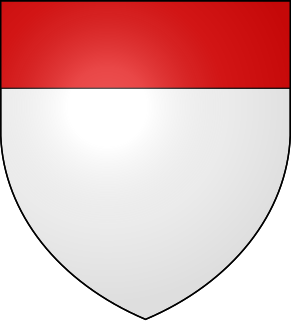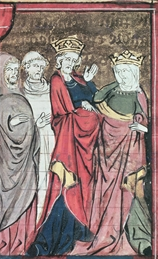 W
WAlessandro Alessandri also known as Alexander ab Alexandro (1461–1523) was a Neapolitan lawyer of great learning, who flourished towards the end of the fifteenth and beginning of the sixteenth century, was descended of the ancient and noble family of the Alexandri of Naples.
 W
WAntonio de Cardona y de Xerica-Aragon, Viceroy of Sicily 1419–1421, son of Hugo de Cardona and Beatriz de Xerica y Martinez de Luna,
 W
WBarbara of Brandenburg was a Marchioness consort of Mantua, married in 1433 to Ludovico III Gonzaga, Marquis of Mantua. She was referred to as a virago because of her strong character and forceful nature, and served as Regent of Mantua several times during the absence of Ludivico III between 1445 and 1455. She is regarded as an important figure in the Italian Renaissance and was a student of Vittorino da Feltre.
 W
WBeatrice of Montferrat was an Italian noblewoman, the eldest daughter of William VI, Marquess of Montferrat, and the third wife of Guigues VI of Viennois, by whom she had two sons. According to the vida of the troubadour Gauseran de Saint-Leidier, Beatrice was the domna (lady), whom he allegedly loved. He celebrated his idealised devotion to her in his cansos.
 W
WBeatrice of Naples, also known as Beatrice of Aragon, was twice Queen of Hungary and of Bohemia by marriage to Matthias Corvinus and Vladislaus II. She was the daughter of Ferdinand I of Naples and Isabella of Clermont.
 W
WGrimaldo Canella was the youngest son of Otto Canella and Consul of Genoa in 1162, 1170, and 1184. Grimaldo is considered the progenitor and eponym of the House of Grimaldi.
 W
WCrescentius the Younger, son of Crescentius the Elder, was a leader of the aristocracy of medieval Rome. During the minority of Holy Roman Emperor Otto III, he declared himself Consul of Rome and made himself de facto ruler of Rome. After being deposed, he led a rebellion, seized control of Rome, and appointed an antipope, but the rebellion failed and Crescentius was eventually executed.
 W
WJohn Crescentius also John II Crescentius or Crescentius III was the son of Crescentius the Younger. He succeeded to his father's title of consul and patrician of Rome in 1002 and held it to his death.
 W
WDomini Guardato was a powerful landowner, wealthy merchant, and an intellectual in the Kingdom of Sicily. He was received into the Order of Jerusalem and decorated the Orders of Calatrava and Alcantara. He was a member of the aristocratic Patrician family Guardato, during the late 12th century.
 W
WBeatrice d'Este, was duchess of Bari and Milan by marriage to Ludovico Sforza. She was reputed as one of the most beautiful and accomplished princesses of the Italian Renaissance. A member of the Este family, she was the younger daughter of Ercole I d'Este and the sister of Isabella d'Este and Alfonso d'Este.
 W
WFrozza Orseolo was a Margravine of Austria by marriage to Adalbert, Margrave of Austria.
 W
WFederico I Gonzaga was marquess of Mantua from 1478 to 1484, as well as a condottiero.
 W
WDiana Guardato was a member of the aristocratic Patrician Guardato family, and had three children with King Ferdinand I:Ferdinando d' Aragona y Guardato, 1st Duke of Montalto, who married 1st, Anna Sanseverino, 2nd, Castellana de Cardona Maria d'Aragona, who married Antonio Todeschini Piccolomini, Duke of Amalfi, a nephew of Pope Pius II and brother of Pope Pius III. Giovanna d' Aragona, who married Leonardo della Rovere, Duke of Arce and Sora, a nephew of Pope Sixtus IV and brother of Pope Julius II.
 W
WPietro Igneo was an Italian Roman Catholic Benedictine monk from the Vallombrosians branch. He also served as a cardinal and was named as the Cardinal-Bishop of Albano. He is often referred to as a member of the Aldobrandini house but this familiar denomination is not attested in sources as a fact.
 W
WJudith, a member of the House of Babenberg, was Marchioness of Montferrat from 1135 until her death, by her marriage with Marquess William V.
 W
WLuca Pitti (1398–1472) was a Florentine banker during the period of the republic presided over by Cosimo de' Medici. He was awarded a knighthood, and received lavish presents from both the Signory of Firenze and the Medici family as a reward for helping maintain the government during the last years of Cosimo's rule when Cosimo was too old and feeble to maintain power alone.
 W
WIppolita Maria Sforza was an Italian noblewoman, a member of the Sforza family which ruled the Duchy of Milan from 1450 until 1535. She was the first wife of Alfonso, Duke of Calabria, who later reigned as King Alfonso II of Naples.
 W
WAdelaide del Vasto was countess of Sicily as the third spouse of Roger I of Sicily, and Queen consort of Jerusalem by marriage to Baldwin I of Jerusalem. She served as regent of Sicily during the minority of her son Roger II of Sicily from 1101 until 1112.
 W
WBoniface del Vasto was the margrave of Savona and Western Liguria from 1084 to c.1130. He was the son and successor of Otto and of Bertha, daughter of Ulric Manfred II of Turin. Boniface was a member of the Aleramici dynasty.
 W
WWilliam was the third son of Frederick III of Sicily and Eleanor of Anjou. He inherited the Duchy of Athens after the death of his elder brother Manfred on 9 November 1317.